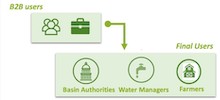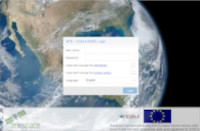- About us
- Project
- Publications
-
Deliverables

D6.4 – Promotional material
December 31, 2020DeliverablesThe aim of the communication materials is to publicise the COALA Project among potential users. This Deliverab...

D6.2: Communication and Disseminati...
December 31, 2020DeliverablesThis Deliverable is an update of the first version of the Communication and Dissemination Plan.

D4.1: Baseline Description of Pilot...
September 30, 2020DeliverablesThis Deliverable describes the pilot experiments of COALA Project. Participatory evaluation of the COALA servi...
- Media Room
-
News

COALA Project: A Success St...
August 20, 2023Blog, Evidenziato, News, Press ReleaseThe COALA Project, a European Union funded project involving a collaborative initiative between the European U...

Workshop on COALA business model
December 19, 2020News
Plenary meeting November 23, 24 and...
December 1, 2020NewsThe plenary meeting of COALA Project has been held on 23rd, 24th and 30 November 2020

Webinar: Governance of Water Scarci...
November 17, 2020NewsThanks to Copernicus data, Europe and Australia launch a new challenge to improve the management of water and ...
- Blog
- Resources
-
- June 22, 2021
- UNSW
- Blog
- No Comments

Five ways that space technologies help farmers
Space technologies are being increasingly utilised in on-farm processes. But how do they really help the field of agriculture?
“The farmer of the future will have space technology fully integrated into their everyday production systems and decision making,” said Jennifer Medway, Agrifutures Senior Manager of Rural Futures. “For instance, dashboards will enable farmers to remotely manage manual processes, and interoperable data systems will radically shift the way on-farm decisions are made.”

1. Space technologies could add more than $17 billion to the Australian rural sector
Improvements to geolocation and satellite connectivity could improve productivity across agriculture, fisheries and forestry. These benefits come from satellite images, low bandwidth sensors, GPS tracking, and more accurate weather forecasting.
2. Space technologies create jobs boosting the amount of talent in our agricultural pool
The government has directed the Australian Space Agency to triple the size of the Australian Space Sector. A review of the Australian Space Industry Capability said “The Australian space industry is embedded in most areas of the Australian economy. Australian capabilities overlap with space industry capability in many areas. Industries such as services (predominantly financial), construction, mining, transport, manufacturing and agriculture are likely to continue to benefit from and add to space industry capability… A significant proportion of these are at the forefront of integrating data received from satellite and space based infrastructure into ground based applications”
3. Space technologies drive innovation
The SmartSat Cooporative Research Centre is investing $245 million research program exploring advanced telecommunications and intelligent satellite systems. These new technologies allow for the generation of better resolution and better frequency data.
4. Space technologies help us with food security
Larger populations and more unpredictable weather make food security ever more critical. Remote sensing technologies help to plan variable irrigation and to apply nutrients to soil more precisely.
5. Growing plants in space helps us learn how to grow in harsh conditions
The first plants grown in space were in the 1960s and were primarily grown to understand how variable conditions would affect their growth. But they have found other benefits, including that plants help the astronauts feel happier. Experiments in the space station have led to developing ways to grow plants with less soil, water and room.















